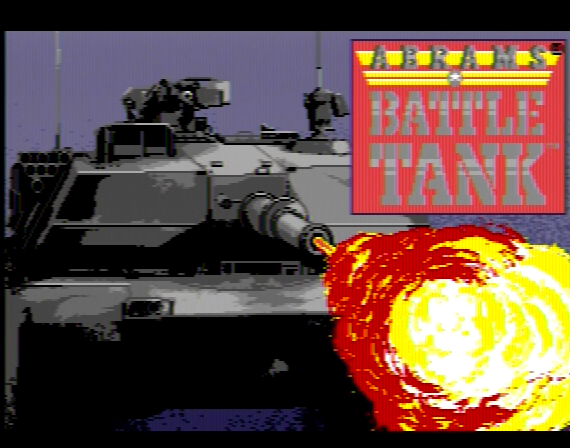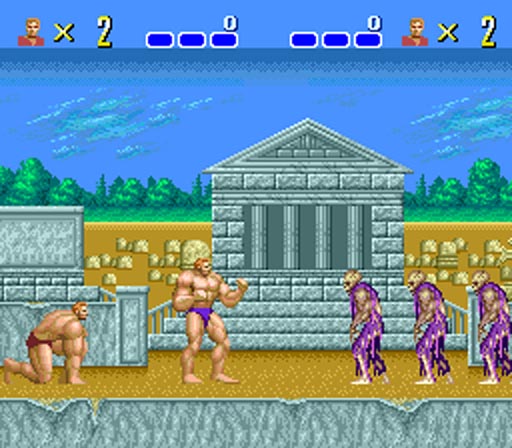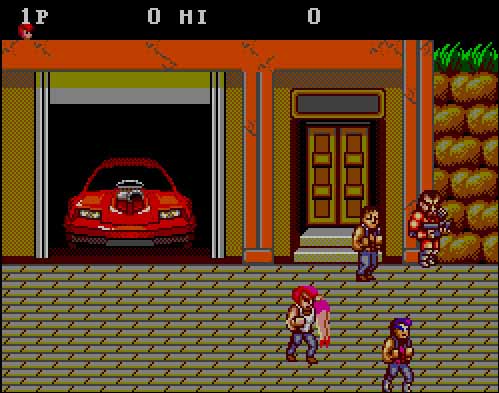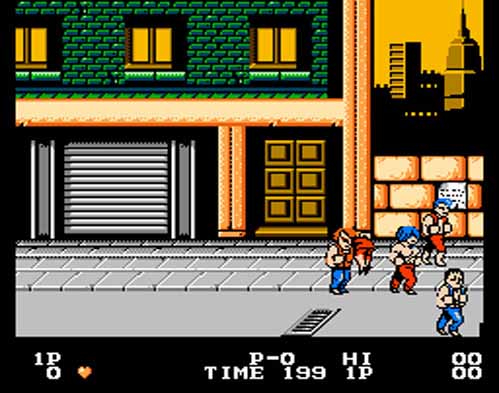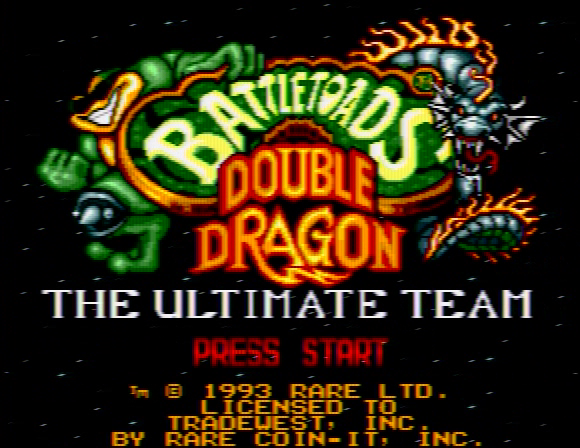1991: Hype vs Reality
Wed, 06/09/2010 - 20:23 — sheath  Not until March 1991 did issues of Gamepro and Game Players dedicate an editorial to the Super Nintendo. Unlike EGM's numerous articles comparing specifications provided by marketing departments, both Gamepro and Game Player's focused on the games that had already been released in Japan. Gamepro exhibited pictures of Super Mario World, F-Zero and Final Fight, while pointing squarely at the "massive support by third-party licensees" as the system's biggest advantage.1 Game Player's Tom Halfhill argued similarly that launch games for the Super Famicom, which was the console's final name in Japan, could have been made as well on the Genesis and TG16. Crassly dismissing exaggerated maximum color count and resolution differences for each system, Halfhill concluded "quality software and clever marketing are more likely to carry the day." 2 Marketing influenced more than the sales of these consoles or their games, it created the popular perception about the machines' capabilities and the quality of their libraries.
Not until March 1991 did issues of Gamepro and Game Players dedicate an editorial to the Super Nintendo. Unlike EGM's numerous articles comparing specifications provided by marketing departments, both Gamepro and Game Player's focused on the games that had already been released in Japan. Gamepro exhibited pictures of Super Mario World, F-Zero and Final Fight, while pointing squarely at the "massive support by third-party licensees" as the system's biggest advantage.1 Game Player's Tom Halfhill argued similarly that launch games for the Super Famicom, which was the console's final name in Japan, could have been made as well on the Genesis and TG16. Crassly dismissing exaggerated maximum color count and resolution differences for each system, Halfhill concluded "quality software and clever marketing are more likely to carry the day." 2 Marketing influenced more than the sales of these consoles or their games, it created the popular perception about the machines' capabilities and the quality of their libraries.
- Read more
- 9384 reads
| Abrams Battle Tank | |
|---|---|
| System | Sega Genesis |
| Publisher | Sega |
| Region | North America |
| Format | 4 Megabit |
| Release Date | 1/1991 |
| In Library | Complete |
1989-1990: Competing with Speculation
Mon, 04/26/2010 - 09:26 — sheath  Summer 1989, before NEC and Sega launched their 16-bit consoles, "Shooter" meant flying an advanced space craft against an evil armada and Nintendo, which owned ninety percent of the worldwide video game market, signified "video game."1 Before Fall, NEC focused its audience on the technical prowess of its newly dubbed TurboGrafx-16 and the merits of "16-bit gaming."2 NEC was not alone in advertising the generational leap, Sega also focused on a single characteristic turned marketing term for its new console, "16-bit."3 Undaunted, Nintendo Power, a magazine owned and operated by Nintendo, continued as it had for more than a year promoting Nintendo Entertainment System and then Gameboy portable games. Video game magazine start-ups Electronic Gaming Monthly (EGM) and Gamepro, however, mutually thrived on rumors and speculation about new hardware. In the same issues that extolled, for the first time, the soon-to-be released Genesis and TG16, both magazines devoted equal space to a "super" system from Nintendo.4 5 This represents an unprecedented public relations campaign for a game console that barely existed as a prototype.
Summer 1989, before NEC and Sega launched their 16-bit consoles, "Shooter" meant flying an advanced space craft against an evil armada and Nintendo, which owned ninety percent of the worldwide video game market, signified "video game."1 Before Fall, NEC focused its audience on the technical prowess of its newly dubbed TurboGrafx-16 and the merits of "16-bit gaming."2 NEC was not alone in advertising the generational leap, Sega also focused on a single characteristic turned marketing term for its new console, "16-bit."3 Undaunted, Nintendo Power, a magazine owned and operated by Nintendo, continued as it had for more than a year promoting Nintendo Entertainment System and then Gameboy portable games. Video game magazine start-ups Electronic Gaming Monthly (EGM) and Gamepro, however, mutually thrived on rumors and speculation about new hardware. In the same issues that extolled, for the first time, the soon-to-be released Genesis and TG16, both magazines devoted equal space to a "super" system from Nintendo.4 5 This represents an unprecedented public relations campaign for a game console that barely existed as a prototype.
- 1. David Sheff, Game Over: How Nintendo Zapped an American Industry, Captured Your Dollars, and Enslaved Your Children (New York: Random House, 1993), 349.
- 2. Sheff, Game Over, 351.
- 3. Steven L. Kent, The Ultimate History of Video Games (New York: Three Rivers Press, 2001), 401.
- 4. Steve Harris, "The Amazing Super Nintendo," Electronic Gaming Monthly, August 1989, 39.
- 5. Steve Massey, "The Cutting Edge: Super Famicom. The Next Generation from Nintendo," Gamepro, July 1989, 13.
- Read more
- 14983 reads
TurboGrafx-16
Wed, 03/31/2010 - 09:54 — sheath| Lifespan: | 1989-1993 |
|---|---|
| CPU: | 7.16 MHz 8-bit HuC6280 4 |
| Audio: | 6 Channels (Uses CPU) 5 |
| Co-Processors: | 3.58 Mhz PSG 6 Video Processor: 16-bit HuC6270 7 Color Processor: HuC6260 8 |
| Resolutions: | 256x256 || 320x256 9 |
| RAM: | 8 KB |
| Video RAM: | 64 KB |
| Colors On Screen: | 480 (60-90 Average, ~128 Max in games) 10 |
| Color Palette: | 512 ( 32 Palettes of 16 colors each) 11 |
| Sprite Max & Size: | 64 at 16x16, 16x32, 16x64, 32x16, 32x32, and 32x64 pixels 12 |
| Sprites per Scanline: | 16 13 |
| Background Planes: | 1 Layer (Dynamic Tiles and Sprites were used to create up to four scrolling layers) |
| Storage: | HuCard 16Mbit (2.5MB), Average 4 Mbit CD-ROM |
- 1. Jonathan J. Burtenshaw, ClassicGaming.com's Museum NEC TurboGrafx-16 (TG16) - 1989-1993 (archive.org February 1, 2008)
- 2. TurboGrafx-16/Duo FAQ - By John Yu, Last revised: 05/25/95 (archive.org May 14, 2007)
- 3. emulationzone.org Turbo-Grafx/PC-Engine Emulation Sections (archive.org June 15, 2008)
- 4. GAMESX.com Forums, Console Mods, RobIvy64 (e-mail) "TG-16/PCE overclocking success!" (archive.org May 1, 2008)
- 5. 6 Waveforms, 1 Frequency Modulated Channel leaves 4 Waveforms, 1 Waveform Channel can become White Noise, all channels can be programmed for sound samples. Paul Clifford (e-mail), PC Engine Programmable Sound Generator (psg.txt) (accessed February 18, 2010) available from http://www.plasma.demon.co.uk/pcengine/; internet.
- 6. Clifford, psg.txt $0802 - Fine frequency adjust
- 7. Emanuel Schleussinger, PC-Engine Video Display Controller Documentation (vdcdox.txt), (February 1998, accessed March 19, 2010) available from http://www.zophar.net/documents/pce.html; internet.
- 8. Paul Clifford (e-mail), PC Engine Video Colour Encoder (vce.txt)(accessed February 18, 2010) available from http://www.plasma.demon.co.uk/pcengine/; internet.
- 9. Typically only 216 horizontal lines are visible and are either 256 or 320 pixels wide, Schleussinger, (vdcdox.txt) 5. The Sprites in the VRAM.
- 10. Sixteen 15 Color palettes for the background, sixteen 15 Color Palettes for Sprites, Clifford, (vce.txt).
- 11. Clifford, (vce.txt).
- 12. Nimai Malle (e-mail), pce_doc Video Sprites (accessed March 20, 2010) available from http://emudocs.org/?page=PC%20Engine
- 13. Actual limit may be 8 due to 16 pixel wide sprites being aligned as 32 pixel sprites, Malle, pce_doc Video Sprites
- Read more
- 22673 reads
Sega Master System vs Nintendo Entertainment System
Sat, 03/13/2010 - 23:58 — sheath| Lifespan: | 1986-1992 | |
|---|---|---|
| CPU: | 3.58 MHz Z80 | |
| Audio: | 4 Channels 3 | |
| Co-Processor: | VDP | |
| Resolutions: | 256x192, 256x224, 256x240 (PAL) 4 | |
| RAM: | 8KB | |
| Video RAM: | 16KB | |
| Color RAM: | 32 bytes5 | |
| Colors On Screen: | 32 (two 16-color palettes)6 |
|
| Color Palette: | 64 | |
| Sprite Max & Size: | 64 at 8x8, 8x16, 16x16, 16x327 |
|
| Sprites per Scanline: | 8 8 | |
| Storage: | Sega Card (32KB) Cartridge 1Mb - 4 Mbit |
 9 10
9 10
| Lifespan: | 1986-199211 |
|---|---|
| CPU: | 1.79 MHz 6502 |
| Audio: | 5 Channels 12 13 |
| Co-Processors: | PPU, pAPU14, MMC15 |
| Resolution: | 256x224 visible of 256x24016 |
| RAM: | 2KB |
| Video RAM: | 2KB |
| Colors On Screen: | 16 (four 4-color background palettes + four 4-color sprite palettes)17 |
| Color Palette: | 52 |
| Sprite Max & Size: | 64 at 8x8 and 8x16 |
| Sprites per Scanline: | 8 18 |
| Storage: | Cartridge 1 Mbit - 4 Mbit Average: 1 Mbit |
- 1. Legacy Sega Consoles: Sega Master System, Sega of America (archive.org January 19, 2002).
- 2. Samuel N. Hart, A Brief History of Home Video Games: Side-by-side Comparison of the Sega Master System and Nintendo Entertainment System, Geek Comix (archive.org June 25, 2008).
- 3. 3 channel tone generator, white noise channel, mono Super Majik Spiral Crew's Guide to the Sega Master System (0.02) (smsc.txt) Basic Sound (Public Domain, SMSC, June 21, 1997, accessed March 11, 2010) available from http://emudocs.org/?page=Master%20System; internet.
- 4. Charles MacDonald, E-mail || Homepage, Sega Master System VDP documentation (msvdp.txt), 11.) Display timing (2002, accessed March 11, 2010) available from http://emudocs.org/?page=Master%20System; internet.
- 5. MacDonald, msvdp.txt, 5.) Color RAM.
- 6. Background patterns can use either palette, while sprite patterns can only use the second one. MacDonald, msvdp.txt, 5.) Color RAM.
- 7. 16x16 and 16x32 Sprites are only available when all sprites on screen are stretched, smsc.txt,
Register 81h.
- 8. msvdp.txt 10.) Sprites.
- 9. Hart, Side-by-side Comparison of the Sega Master System and Nintendo Entertainment System.
- 10. Nintendo of America, Systems: NES Specifications (archive.org June 15, 2001).
- 11. NES was test marketed in 500 to 600 retail stores in New York during Christmas, 1985, David Sheff, Game Over: How Nintendo Zapped an American Industry, Captured Your Dollars, and Enslaved Your Children (New York: Random House, 1993), 169.
- 12. 2 Square Waves, 1 Triangle, 1 White Noise, 1 Delta Modulation Channel for samples, Uses the CPU. Brad Taylor, The NES sound channel guide 1.8 (nessound.txt), Introduction (July 27, 2000, accessed March 11, 2010) available from http://emudocs.org/?page=NES; internet.
- 13. Brad Taylor, NTSC delta modulation channel documentation 2nd release (DMC.txt), (February 19, 2003, accessed July 17, 2011) available from http://nesdev.parodius.com/dmc.txt; internet.
- 14. "virtual" sound unit inside CPU
- 15. Yoshi, Nintendo Entertainment System Documentation 2.0 (nestech.txt), 2. Acronyms (accessed March 11, 2010) available from http://emudocs.org/?page=NES; internet.
- 16. Martin Korth, Everynes - Nocash NES Specs (everynes.txt) PPU Dimensions & Timings (2004, accessed March 11, 2010) available from http://emudocs.org/?page=NES; internet.
- 17. everynes.txt PPU Palettes.
- 18. everynes.txt PPU Sprites.
- Read more
- 56455 reads
Battletoads & Double Dragon Comparison Level 1 Movie
Thu, 02/11/2010 - 02:09 — sheath- Read more
- 3307 reads
Battletoads & Double Dragon SNES - Genesis Comparison
Wed, 02/10/2010 - 17:36 — sheath| Battletoads & Double Dragon | |
|---|---|
| System | Sega Genesis |
| Publisher | Tradewest |
| Region | North America |
| Release Date | 2/1993 |
| Battletoads & Double Dragon: The Ultimate Team | |
|---|---|
| System | Super Nintendo |
| Publisher | Tradewest |
| Region | North America |
| Release Date | 12/1993 |
